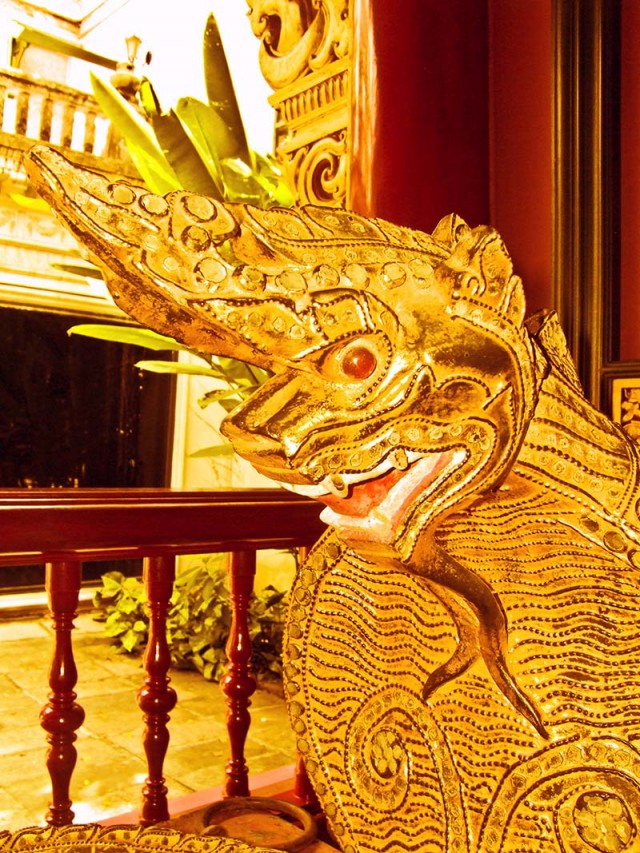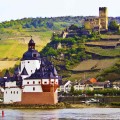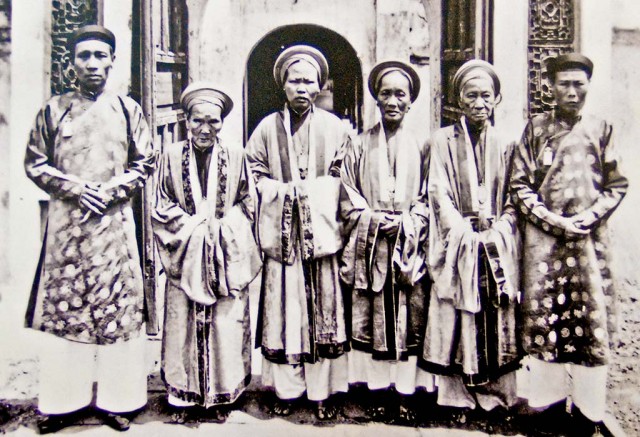
While we wait patiently for the chance to sail off to new cruise adventures, it’s an opportunity to reminisce about favorite past shore excursions. A tour to Hue is a highlight of any visit to Vietnam. This review from a day trip from Oceania’s Nautica was originally posted 10 years ago.
There’s something I always ponder when I visit royal fortresses. Were their high walls, moats and drawbridges mainly to keep marauding invaders out, or were they craftily built to keep the politicians in, so the people could get on with their lives?
The historic photos of life in Vietnam’s venerable imperial palace in the ancient city of Hue make a case that it was an enclave of mandarins who never really learned to ease back on a casual Friday. The glum-faced groups of guys wearing long, heavy gowns and bell bottom silk trousers sometimes sported head gear whose jutting, alien antennas seem more appropriate for a Caribbean carnival than a day in court.
But they sure did know how to build a great set for a costume party. A day trip to Hue — Vietnam’s capital from 1802 to 1945 — makes a full and satisfying alternative shore excursion on a port stop in Da Nang, whose attractions are, frankly, limited.
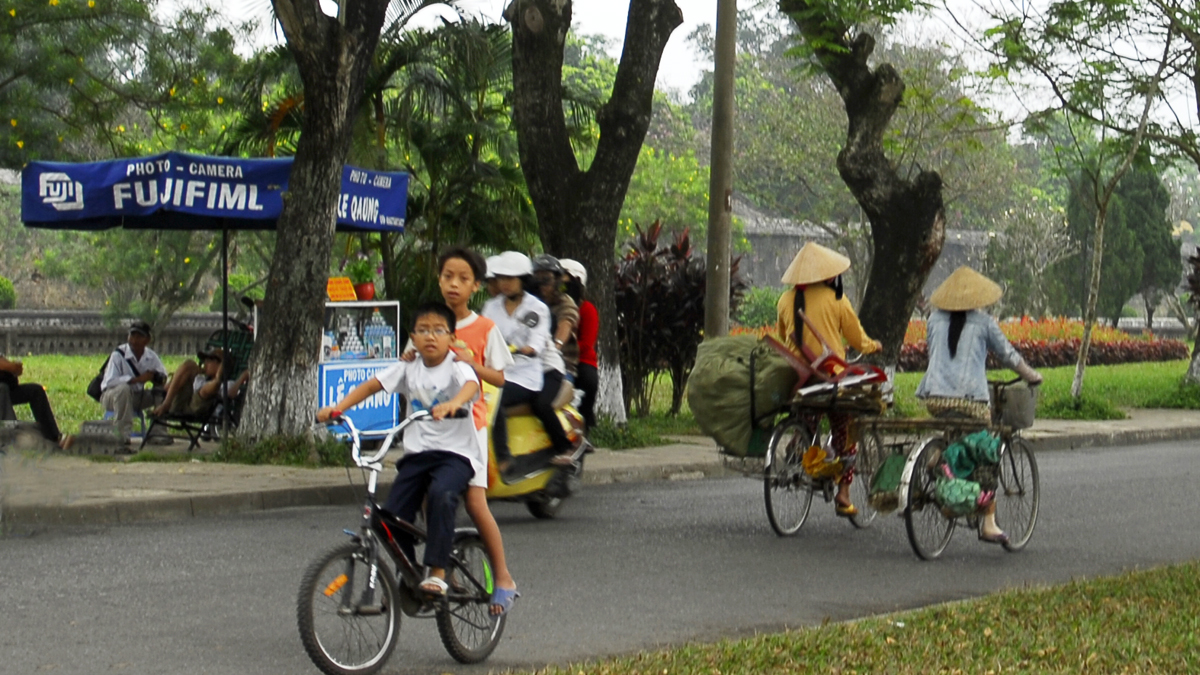
Getting there is a visual treat
Arriving for a two-day stay in Da Nang aboard Oceania Cruises ship Nautica, many other guests were opting to go overnight to Hanoi, Vietnam’s busy capital. But I wanted to see more sedate Hue because the city was in the center in the horrific 1968 Tet offensive in the Vietnam War. The imperial palace had been feared destroyed during intensive bombing but it was mostly spared and is a time capsule of traditional Vietnamese art and culture.
The trip inland from the coast to Hue takes close to three hours, but it’s rewarding with its dramatic views. It also helped that in a country not known for its infrastructure, Oceania had managed to find a tour company using modern European buses with entertaining guides who spoke impeccable English.
The greenery along the way is lush thanks to the fact that this is a rainforest. The road passes through the Hai Van pass — in Vietnamese that means sea clouds — and in further translation, it means it can rain at any minute. The pass was the boundary between North and South Vietnam during the many years of war and some fortifications built by the French that were used later by the Americans and South Vietnamese are still in view. The demilitarized zone, or DMZ, was the battleground for some of the heaviest fighting during the American involvement in the country.
Hue comes in many colors
Hue is a city of many hues: A rich gold predominates, the blues in the pottery also feature in many of the mosaics and, of course, multiple shades of red, including big, crimson posters featuring the visage of a smiling Uncle Ho Chi Minh.
Every road is a visual treat, with open-air cafes and shops displaying their wares on the sidewalk and mounds of fruit being sold on street corners. This legacy of color and decoration and finery gives Hue a continuing reputation as the most fashionable city in Vietnam.

The pagoda on the Perfume River
The first stop is the Thien Mu Pagoda on the north bank of the Perfume River, a few miles southwest of central Hue. The temple and its gardens are arranged in a group of seven tiers, each of which is supposed to represent a step toward enlightenment to the Buddhist monks who still call this home. The grey-robed monks work in silence in daily routines of prayer, cooking and weed whacking.
The octagonal Phuoc Dien Tower at the front of the complex also has seven levels and an enormous antique bell. A collection of art works includes a dozen carved and beautifully painted wooden sculptures whose beards are made of real hair.
A building near the rear of the complex houses a bizarre relic: the rusty Austin sedan in which the monk Thich Quang Duc rode from this temple to Saigon on June 11, 1963. He stepped out of the car in an intersection, sat down and set himself on fire in protest of the lack of religious freedom in the country.
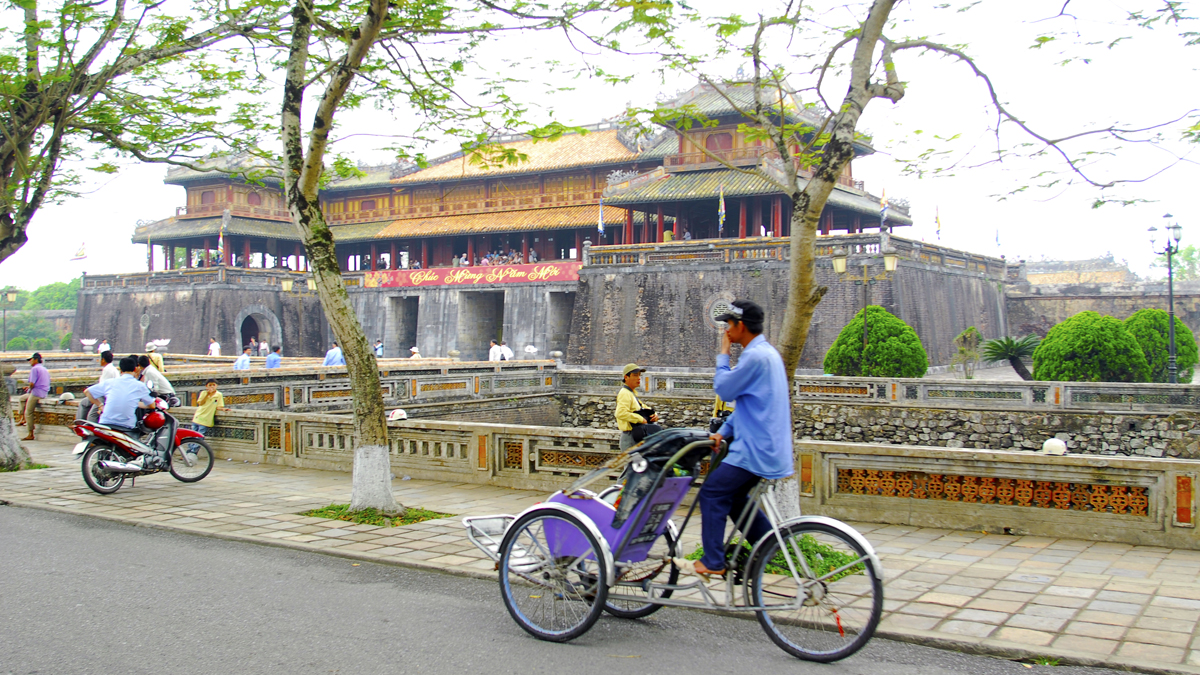
Welcome to the Forbidden City
The highlight of a day visiting Vietnam’s old capital is the palace complex modelled on the Forbidden City in Beijing that’s known here as the Forbidden Purple City. Why they call it purple isn’t immediately clear, as it’s more red and gold today. Mostly likely the name referred to the colour preferred by royalty.
The palace was built for the Emperor Gia in the early 19th century, the start of what became known as the Nguyen dynasty, and its “forbidden” citadel was to be used solely by the emperor and his family. Today strolling the grounds with their many wooden bridges and reflecting pools is a popular outing for families of any social status and the carved dragons, horses, elephants are magnets for children who like to climb.
While the rumors of destruction during the 1968 Tet offensive were overstated, many of the walls and structure within the imperial complex are in dire shape.The remnants have been declared a UNESCO world heritage site, but many of the remaining wooden structures are aging badly and walls are still pocked with bullet holes or sit as piles of rubble. It’s all in need of some serious corporate donations for restoration. Despite that, the lavish carvings, lacquer work and architecture give ample testimony to what a gem this must have been when it was in its heyday — right to 1945.
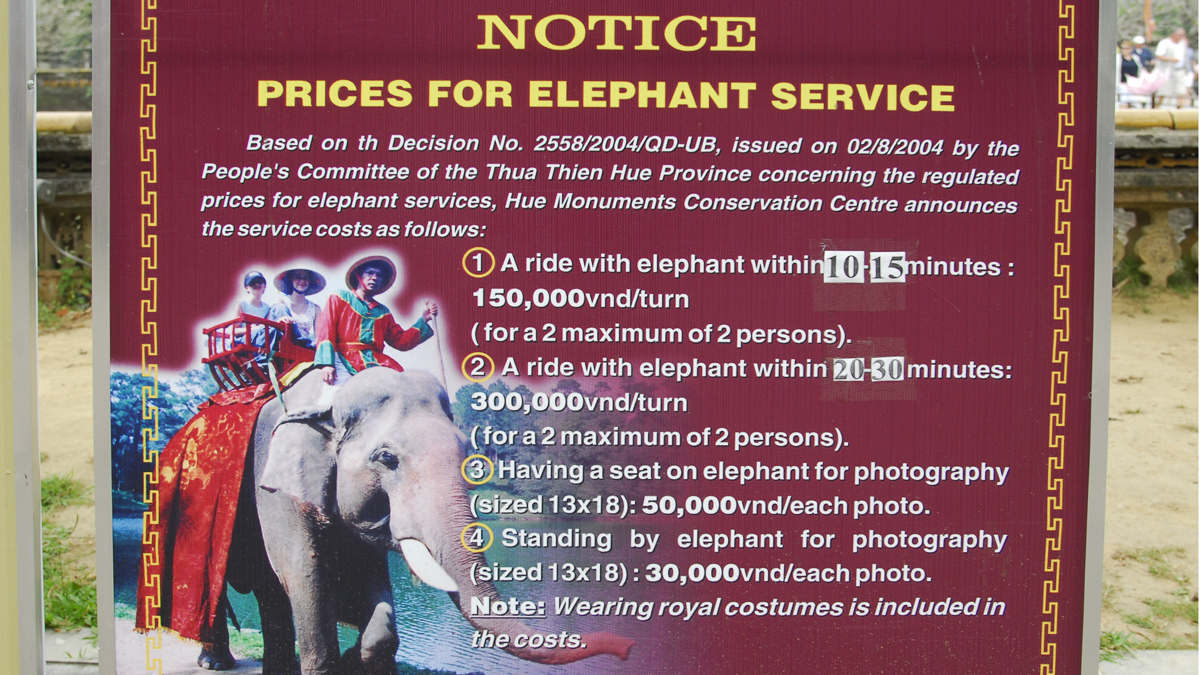
Suitable, but oh so tacky photo ops
As we headed back out of the walls, I was really tempted to get a photo next to an elephant, complete with the chance to suit up in the full mandarin outfits and ornate caps that I’d seen in the old photos. The sign for the elephants made it obvious that the government still gets intricately involved in the business of everyday life, setting the rules even for the length of time people can sit on an elephant. (Note: Elephant riding is no longer offered.)
At the time I was there in 2010, the price for 15 minutes on a pachyderm in costume was less than $10. The elephant was busy with another customer and we had to move on. But thinking about it, it must have been fun to have been an emperor with your own personal elephant and a wardrobe of party hats.
Despite their glum faces, maybe they had some fun in the palace after all.

